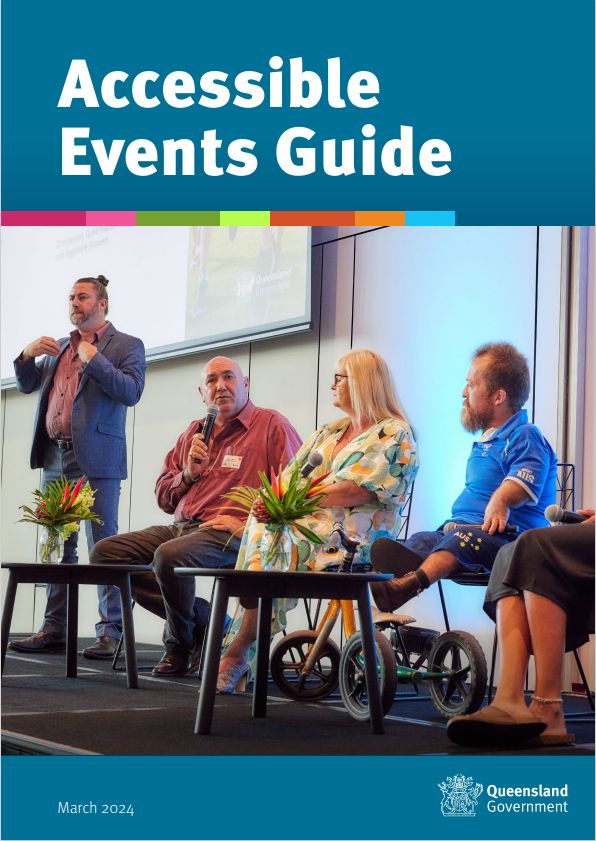The Queensland Government has produced an accessible events guide for organisers that covers everything from conception through to the finale. As indicated by the title, the focus is specifically on disability access. However, to be accessible and inclusive, other underrepresented groups also need to be considered. So this post has a list of other event guides as well.
“A successful, accessible and inclusive event is one where all attendees have an opportunity to access and experience every aspect of the event and leave with a sense of enjoyment, togetherness and satisfaction.”

Universal design principles underpin the guide
The guide begins with the usual introductory sections including definitions of disability, and design principles of universal design and co-design. The seven principles of universal design are listed with examples of where each principle might apply. However, these principles are not intended as a checklist. Rather, they are concepts to consider in all designs. The key to designing universally is to co-design with users.
“Consultation is key to the universal design process. Without it, designers and creators are limited by their personal experiences and imagination.”

The Communication section covers all the details – everything from Easy English and colour contrast to using CamelCase in social media. The next section of the Guide outlines the practical steps for accessible events – major and minor. It covers indoor and outdoor events from registration through to transport, catering and exiting the event.
Online events
The online environment is good if transport is an issue or the attendee needs to feel safe in a familiar environment such as the office or home. Online events include award ceremonies, seminars, meetings and workshops. Commonly used software is best especially if it has in-built accessibility tools such as captioning. This section of the guide has a case study that explains the key elements of a successful event.
The full title of the guide is, Queensland Government Accessible Events Guide and there is a list of resources at the end.
Accessible Events checklist
Queensland Government Accessible Events checklist is a comprehensive and a great supplement to the guidelines. The checklist has sections on:
- Event planning for platform and online events
- Venue and location considerations
- Getting to the event: transport and parking
- The event itself: seating, staff, supplies
- Ending the event
- Getting feedback afterwards

Other guides to accessible events
The City of Sydney Inclusive and accessible event guidelines includes information on why events should be inclusive. It has information on the different types of disability people experience. It has four sections covering indoor and outdoor events and a set of checklists:
- Accessible venues and spaces
- Opportunities for inclusive participation
- Accessible materials and information
- Staff awareness and attitudes

The Victorian Government has an accessible event guideline and checklist which is downloadable in Word. However this is looking a little dated. The Brisbane City Council has a webpage with basic information which is a good place to start.
The New South Wales Government has an Event Starter Guide webpage which includes a section on accessibility. The guide covers transportation, parking, signage, and communicating access features, and more. The 2023 Toolkit for accessible and inclusive events has a checklist and accessibility symbols.

The Zero Project guidelines are based on real experience of running conferences. The Canadian guide is detailed, and explains the development of the guidelines.

Accessible conferences: Why you should care!

A Pulse article posted on Linked In by Nicholas Steenhout covers the basics. His personal experiences have made him acutely aware of how the little details count for so much. He covers websites, name badges, venue, registration desk, conference rooms, amphitheater, bathrooms, carpets, hallway, dining halls, presentation, cabaret style seating, interpreters, slide designs and font sizes, handouts, social events, and transportation.
Good for a quick grab for the essentials – you never know who you might be missing out on and that means both speakers and delegates.
